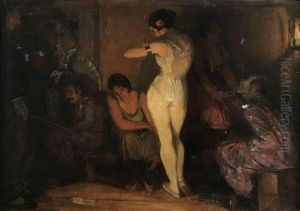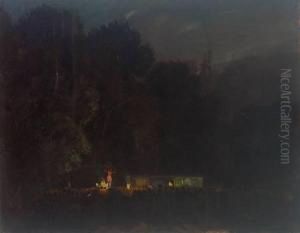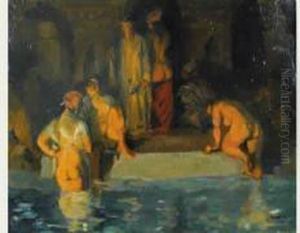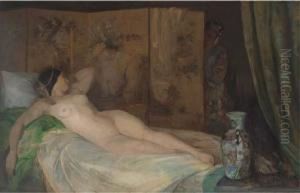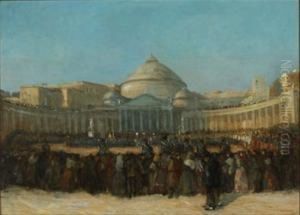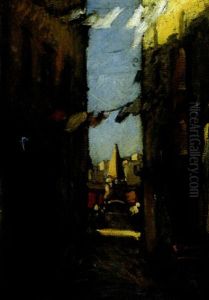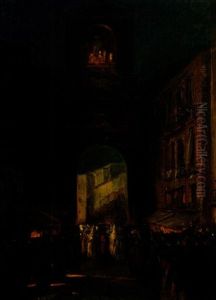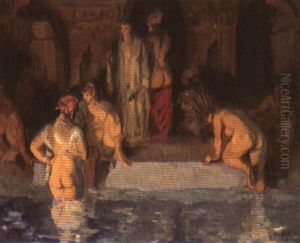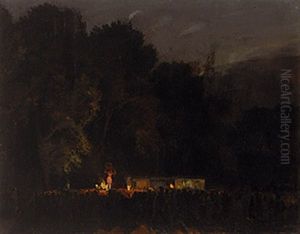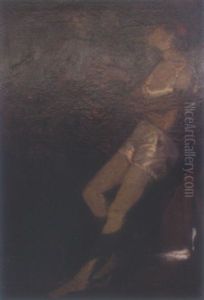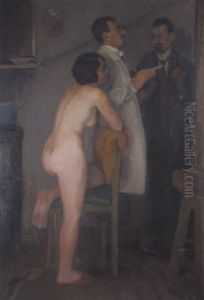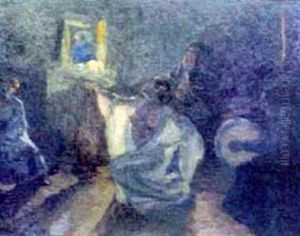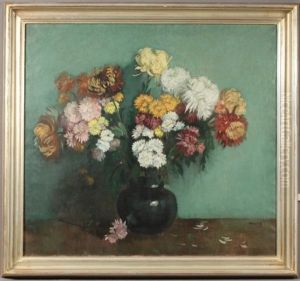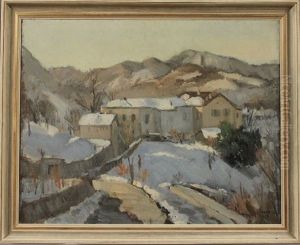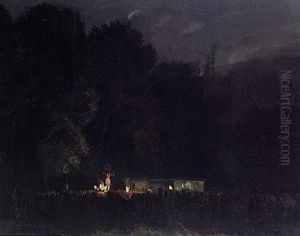Amandus Faure Paintings
Amandus Faure was a relatively lesser-known German painter, born in Ellwangen, Germany, in 1874. His work was primarily rooted in the 19th-century academic painting tradition. Faure's artistic journey was shaped by the influences of the time, including the prevailing styles of Realism and later, Impressionism.
Faure studied art at the Royal Academy of Fine Arts in Munich, which was a significant center for art and culture during his time. The academy was known for its rigorous academic training, which was reflected in Faure's technical proficiency. He was particularly known for his landscape paintings, which depicted the German countryside with a meticulous attention to detail and a strong sense of atmosphere.
Despite the emergence of modernist movements such as Expressionism and Cubism during his lifetime, Faure remained relatively conservative in his style, choosing to focus on the beauty of the natural world rather than exploring the avant-garde styles that were gaining popularity amongst his contemporaries. His work, therefore, did not gain the same level of recognition as some of his more innovative peers.
Faure's paintings were marked by their serene and often idyllic portrayals of nature. He used a soft palette to create harmonious compositions that evoked a sense of tranquility. Although his works were not at the forefront of the artistic innovations of his time, they provided a continuation of the academic tradition that was appreciated by a certain audience.
Amandus Faure's career was modest, and he remained active as a painter until his death in 1931. His works are now held in various private collections and occasionally appear in auctions. While he may not have achieved widespread fame, his dedication to his craft and his ability to capture the subtle beauty of the landscapes around him ensure that he retains a place in the history of 19th and early 20th-century German art.










